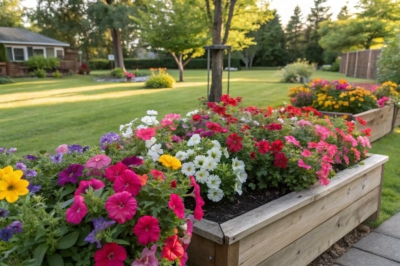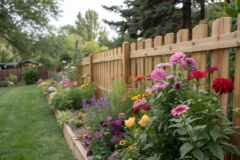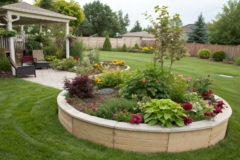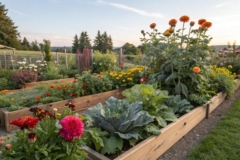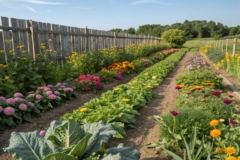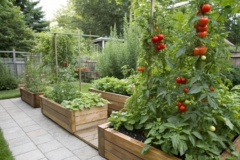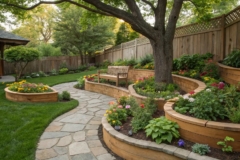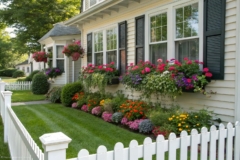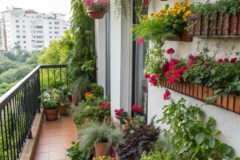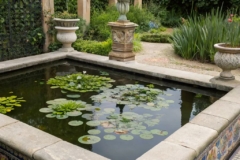1. Lavender Love
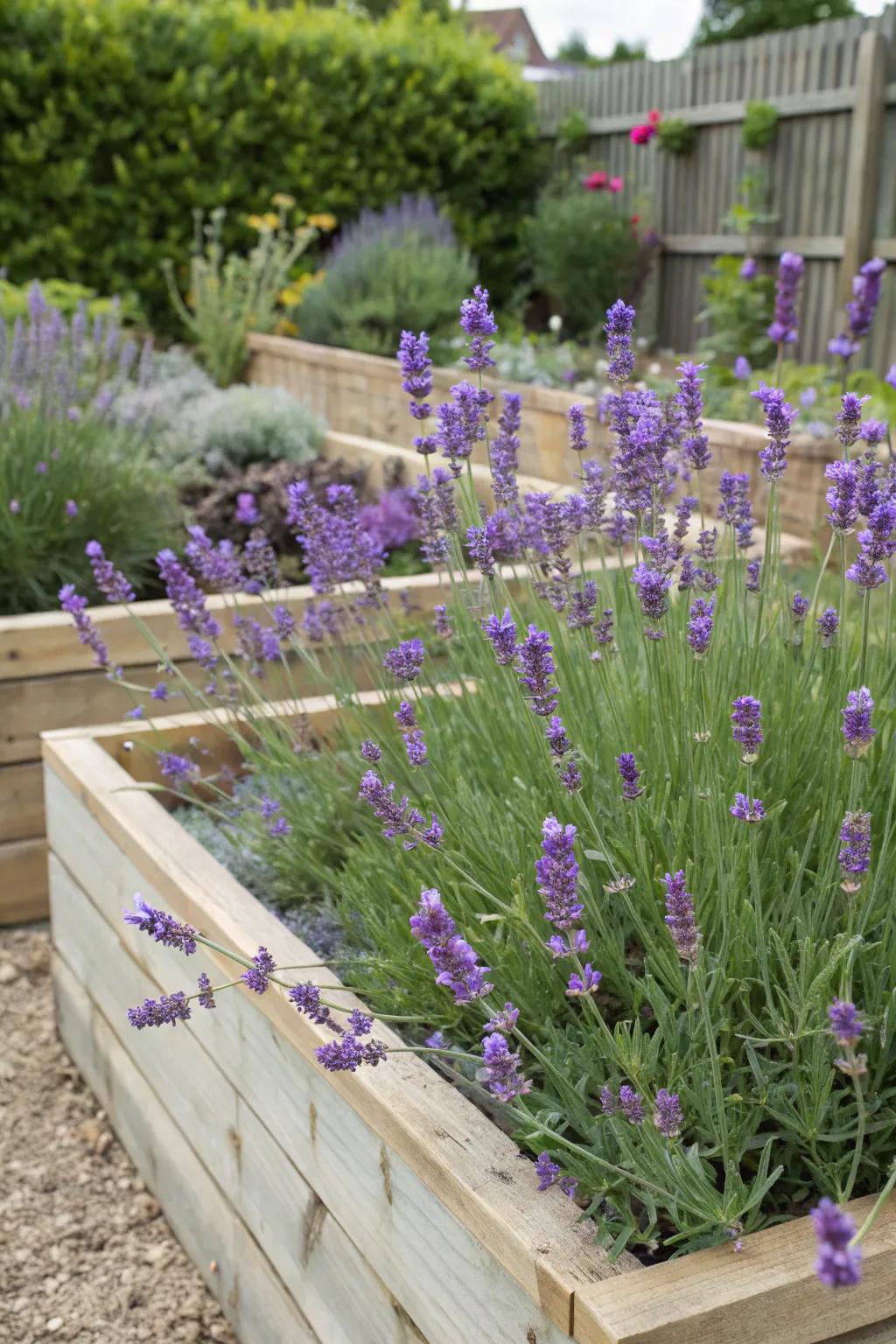
Lavender is a classic choice, offering soothing scents and lovely purple blooms. It’s perfect for adding a touch of calm to raised beds.
Might be a good match:
- Lavender Seeds for Planting: Grow your own lavender with premium seeds. Enjoy soothing scents and vibrant purple blooms.
- Raised Garden Bed Kit: Create a stylish home for your lavender with an easy-to-assemble raised bed kit.
- Organic Lavender Fertilizer: Boost your lavender’s growth with organic fertilizer, ensuring lush and healthy plants.
2. Salvia Sensation
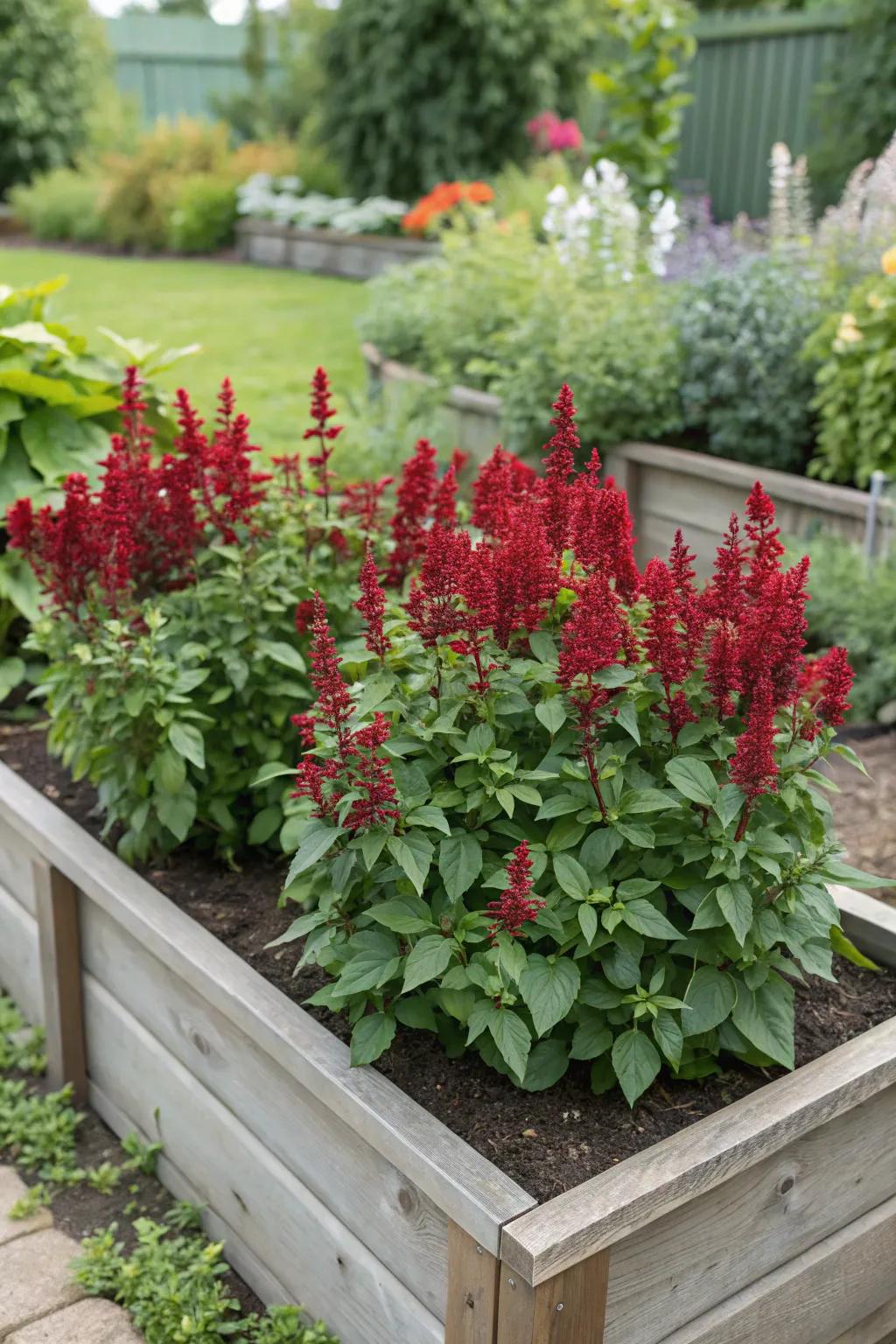
Salvias, with their spike-like flowers, create a striking contrast in a raised bed. They’re also a favorite of hummingbirds!
Give these a look:
- Salvia Flower Seeds: Plant vibrant Salvia seeds to attract hummingbirds and enhance your raised garden beds effortlessly.
- Organic Potting Mix for Raised Beds: Boost your Salvia’s growth with nutrient-rich organic potting mix designed for raised bed gardens.
- Hummingbird Feeder: Draw more hummingbirds to your garden with an attractive and easy-to-use hummingbird feeder.
3. Impatiens Impact
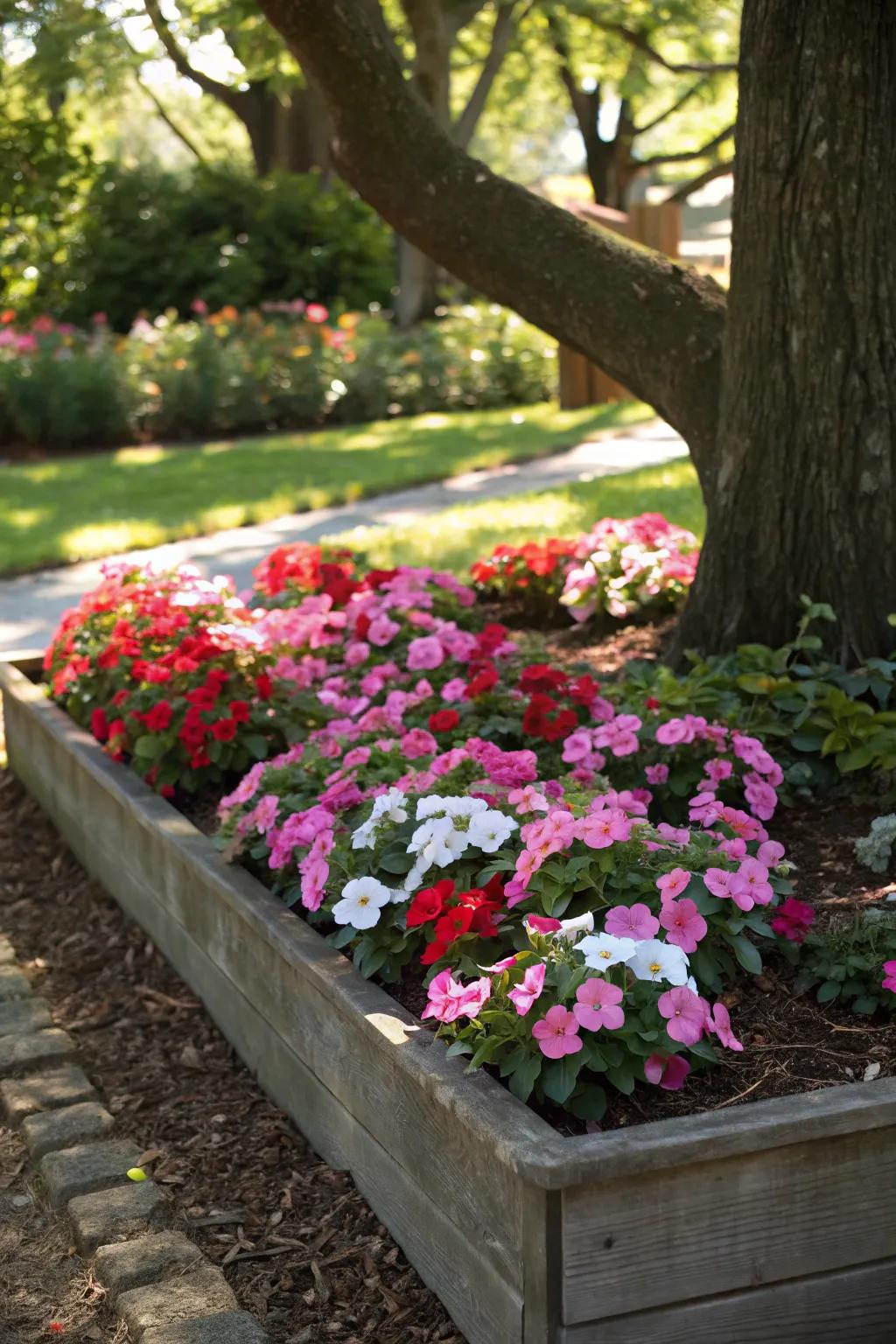
Impatients are perfect for those tricky shady spots. Their bright blooms add color where the sun doesn’t always shine.
A few suggestions:
- Shade-Loving Annual Flower Seeds: Brighten shady spots with vibrant impatiens seeds. Add a splash of color to your garden.
- Organic Potting Mix for Flowers: Give your impatiens the best start with nutrient-rich organic potting mix for healthy growth.
- Decorative Raised Garden Bed Kit: Easily create stunning raised flower beds with this decorative and durable garden bed kit.
4. Zesty Zinnias
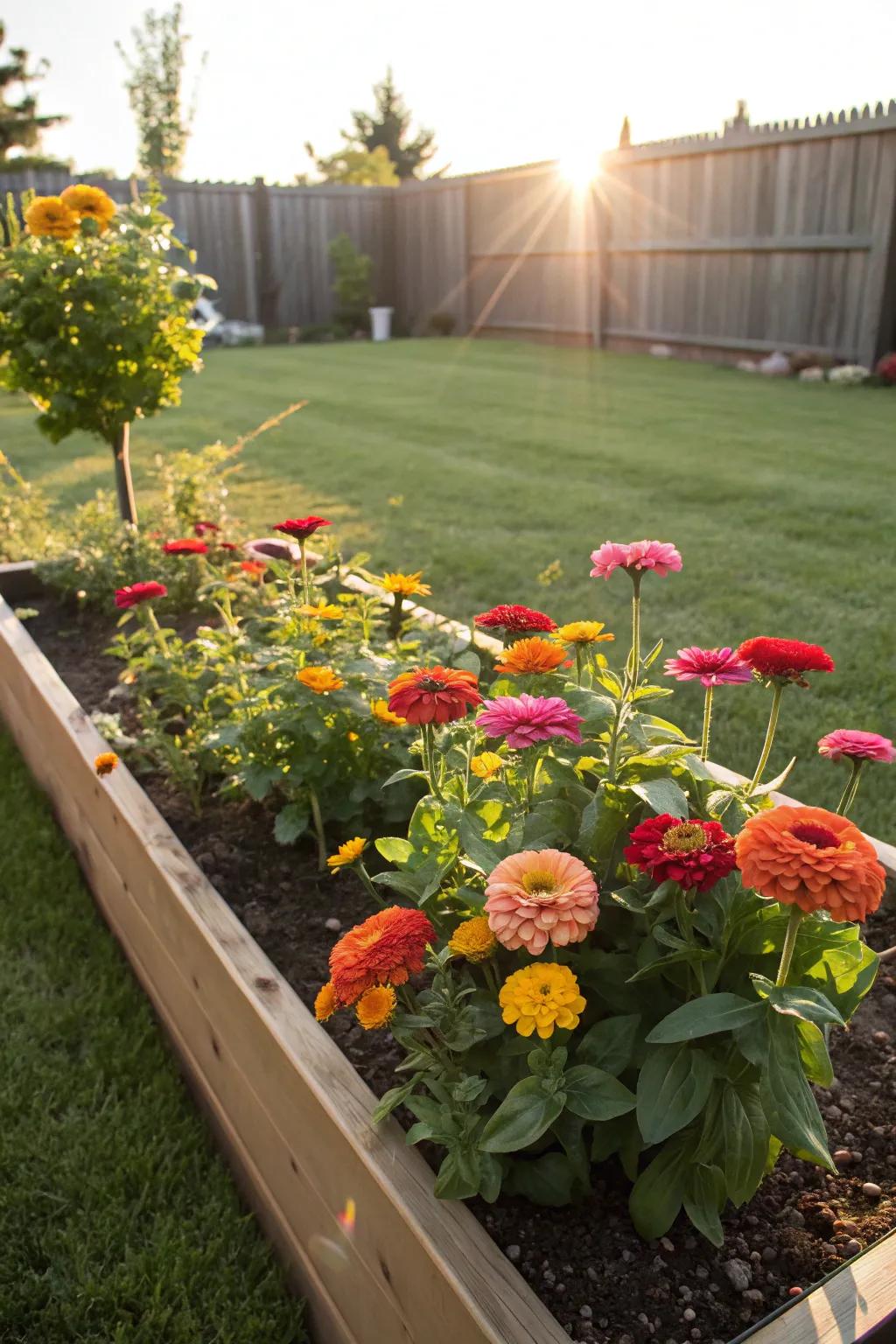
Zinnias are my go-to for adding a splash of summer color to any raised bed. They’re super easy to grow, and their vibrant hues can brighten even the dullest corners.
Explore these options:
- Raised Garden Bed Kit: Elevate your garden with this easy-to-assemble raised bed kit. Perfect for vibrant zinnias!
- Zinnia Flower Seeds: Brighten your garden with a packet of zinnia seeds. Enjoy a spectrum of vivid colors!
- Organic Potting Soil: Ensure healthy growth for your zinnias with rich, organic potting soil. Promote vibrant blooms!
5. Nasturtium Niches
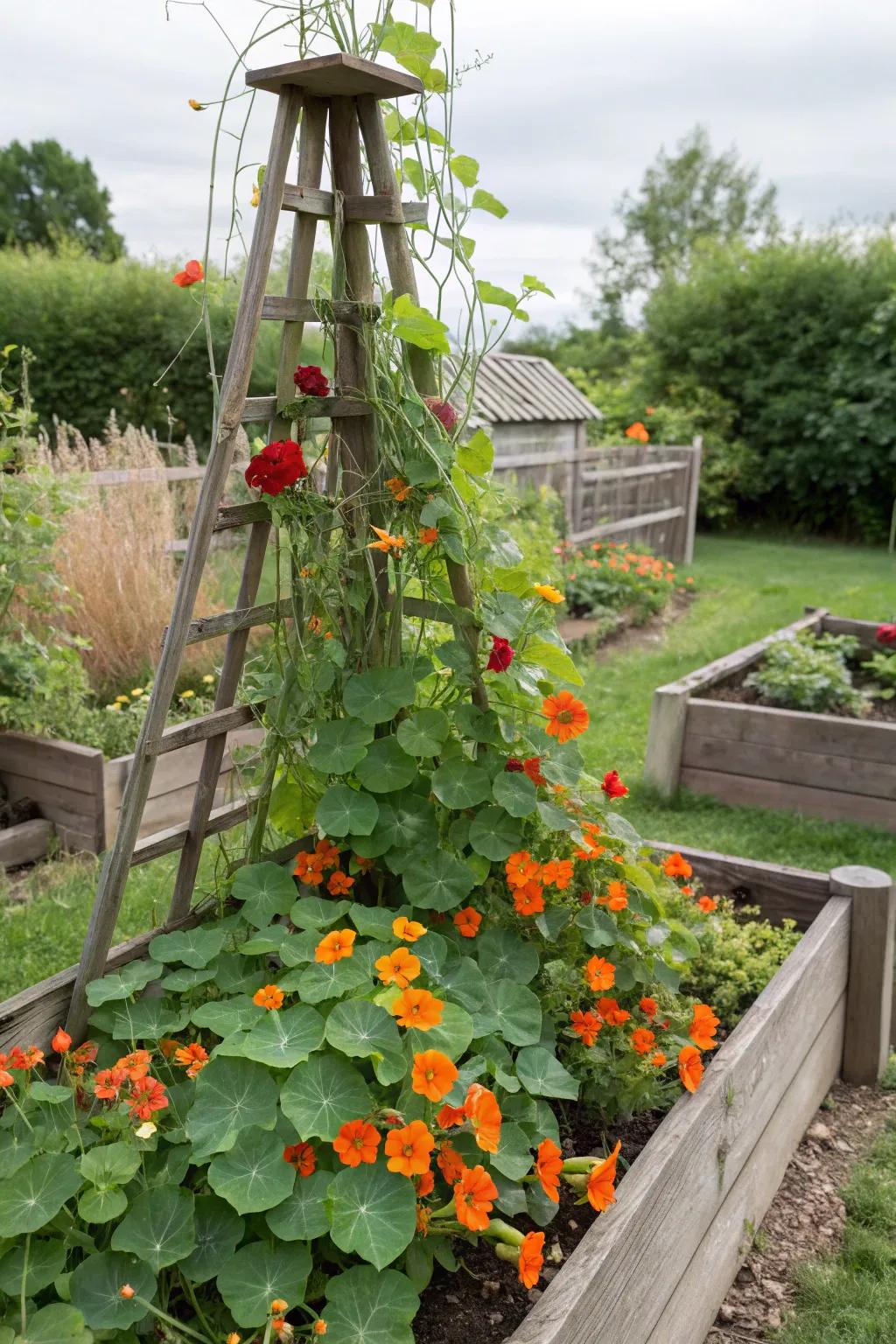
I stumbled upon nasturtiums and fell in love with their climbing nature and peppery scent. They’re a delightful addition to any raised bed.
Check these products out:
- Garden Trellis for Climbing Plants: Enhance your raised bed with a durable trellis, perfect for supporting climbing nasturtiums effortlessly.
- Organic Nasturtium Seeds: Plant these vibrant and edible nasturtium seeds to add color and flavor to your garden beds.
- Soil Mix for Raised Beds: Ensure healthy plant growth with nutrient-rich soil mix, ideal for flourishing nasturtium blooms.
6. Sweet Alyssum Accent
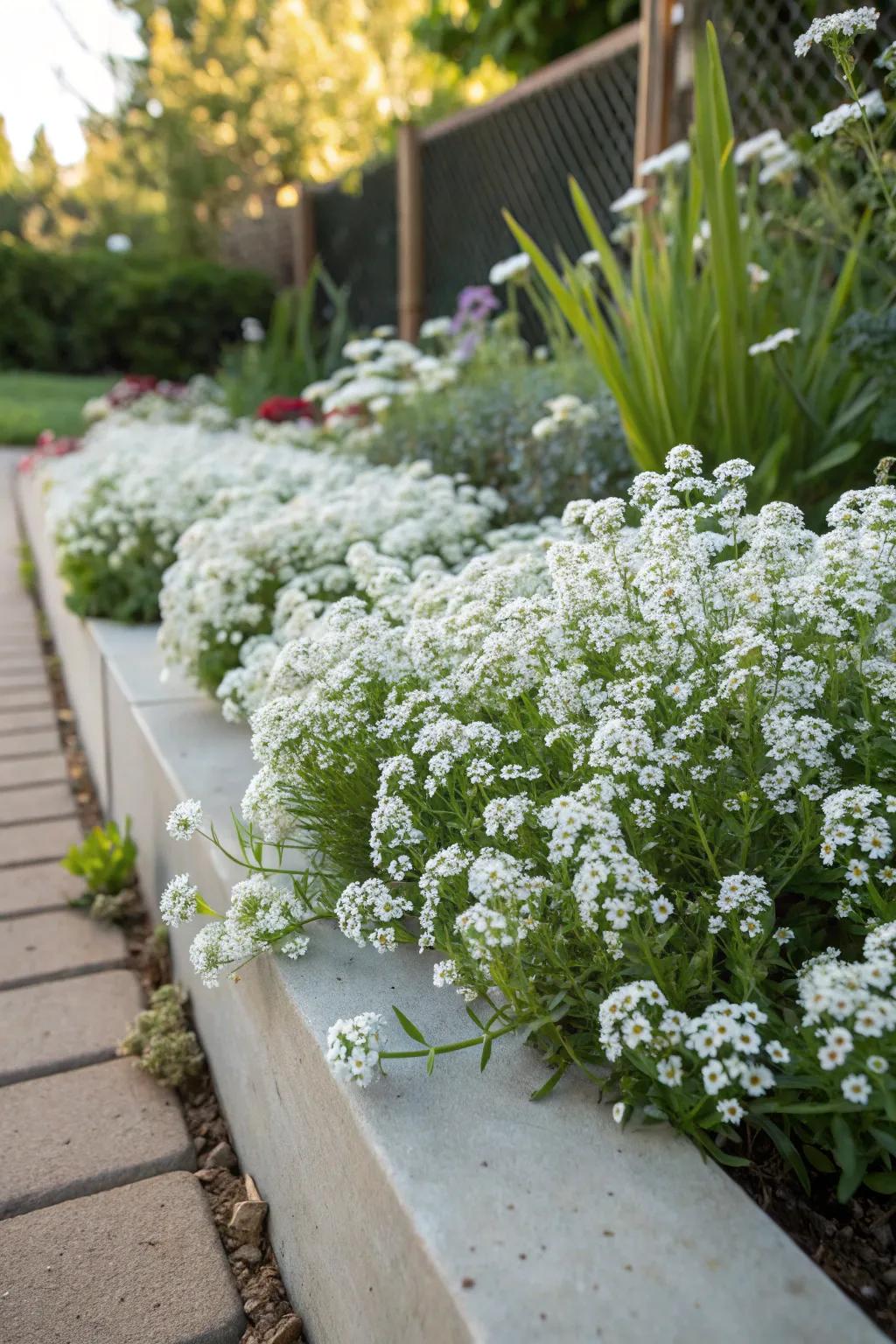
Sweet alyssum is perfect for edging your raised beds. Its small, fragrant flowers create a delicate border of white and pastel colors.
Consider these options:
- Sweet Alyssum Seeds: Plant sweet alyssum seeds to achieve a fragrant and colorful border in your garden.
- Raised Bed Planter Boxes: Enhance your garden layout with durable planter boxes perfect for showcasing sweet alyssum.
- Organic Potting Soil: Use organic potting soil to provide your sweet alyssum the nutrients they need for blooming.
7. Black-eyed Susan Beauty
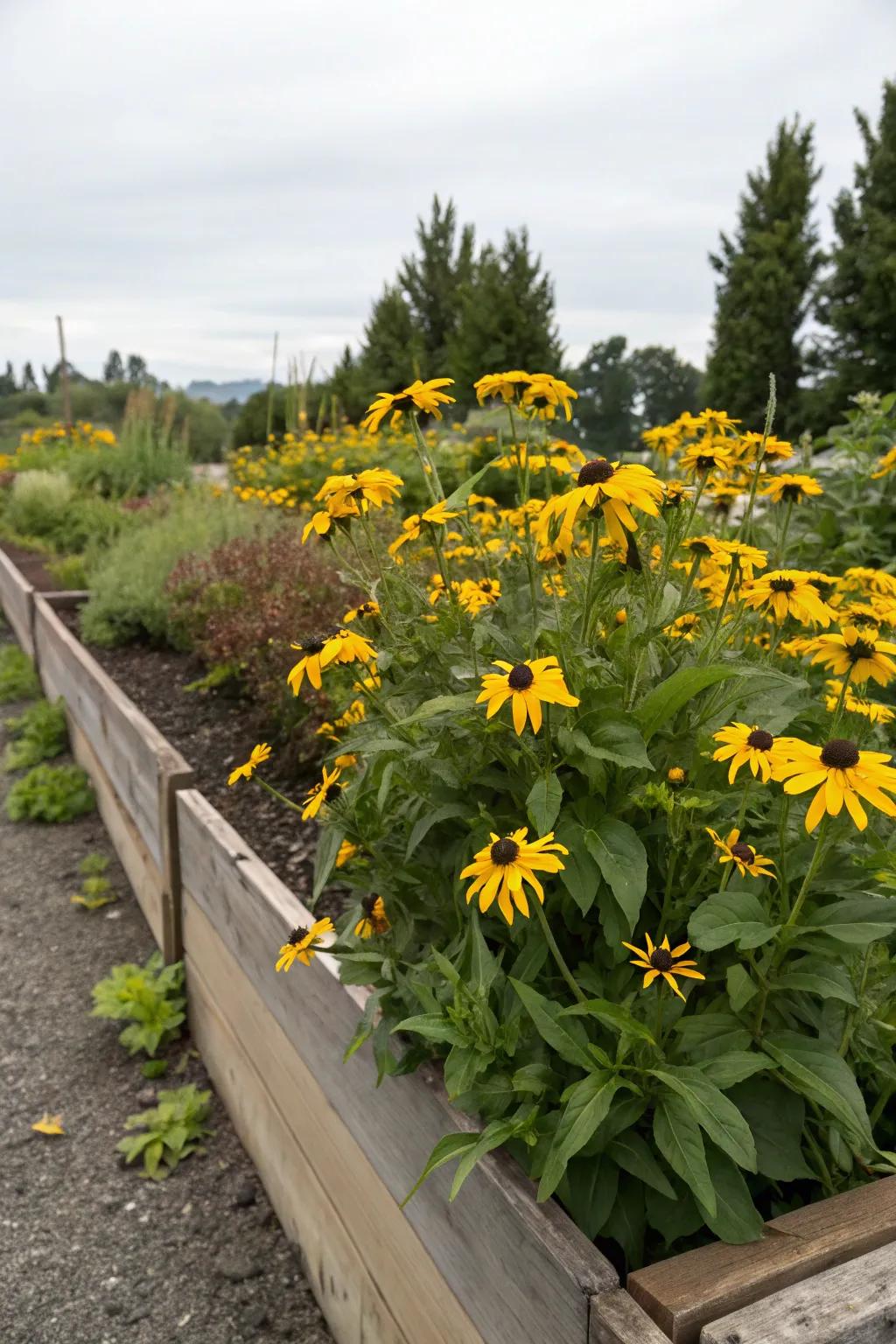
Black-eyed Susans are like the cheerful friends you can always count on. Their sunny yellow petals are a staple in my raised beds.
These products might be useful:
- Organic Flower Seeds Packet: Plant your own radiant Black-eyed Susans easily with these organic seeds. Brighten up your garden!
- Natural Wood Raised Garden Bed Kit: Enhance your garden’s beauty with a stylish raised bed perfect for cheerful Black-eyed Susans.
- All-Purpose Organic Plant Fertilizer: Nourish your Black-eyed Susans with this organic fertilizer for vibrant and healthy blooms.
8. Marvelous Marigolds
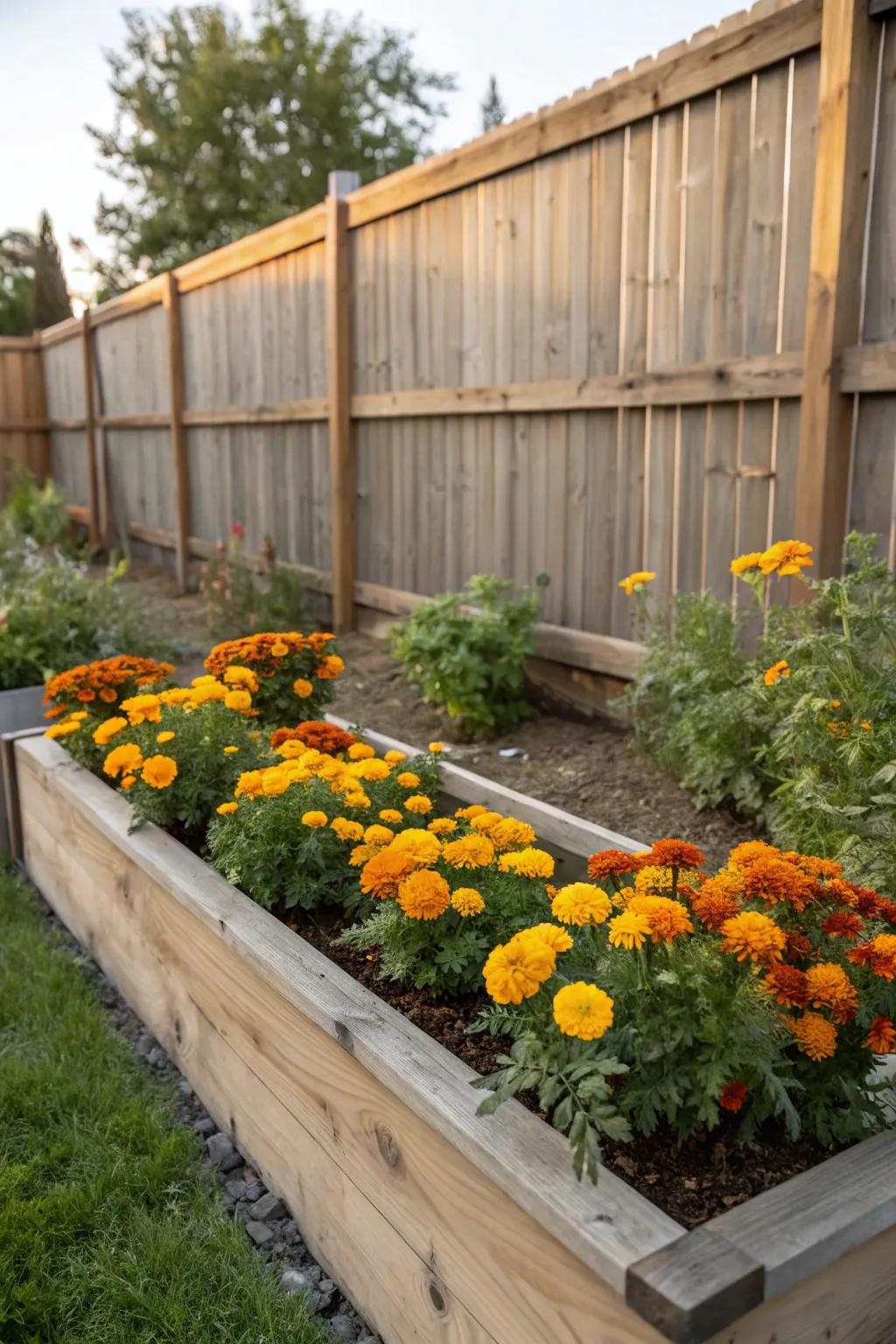
Marigolds are tough cookies that love basking in the sun. Their bright yellows and oranges are perfect for a cheerful raised bed display.
A few helpful options:
- Organic Marigold Seeds: Plant vibrant marigolds with organic seeds for a colorful, eco-friendly raised bed display.
- Raised Garden Bed Kit: Create the perfect structure for your marigolds with an easy-to-assemble raised garden bed kit.
- All-Purpose Potting Soil: Boost marigold growth with nutrient-rich potting soil for beautifully blooming raised beds.
9. Snapdragon Surprise
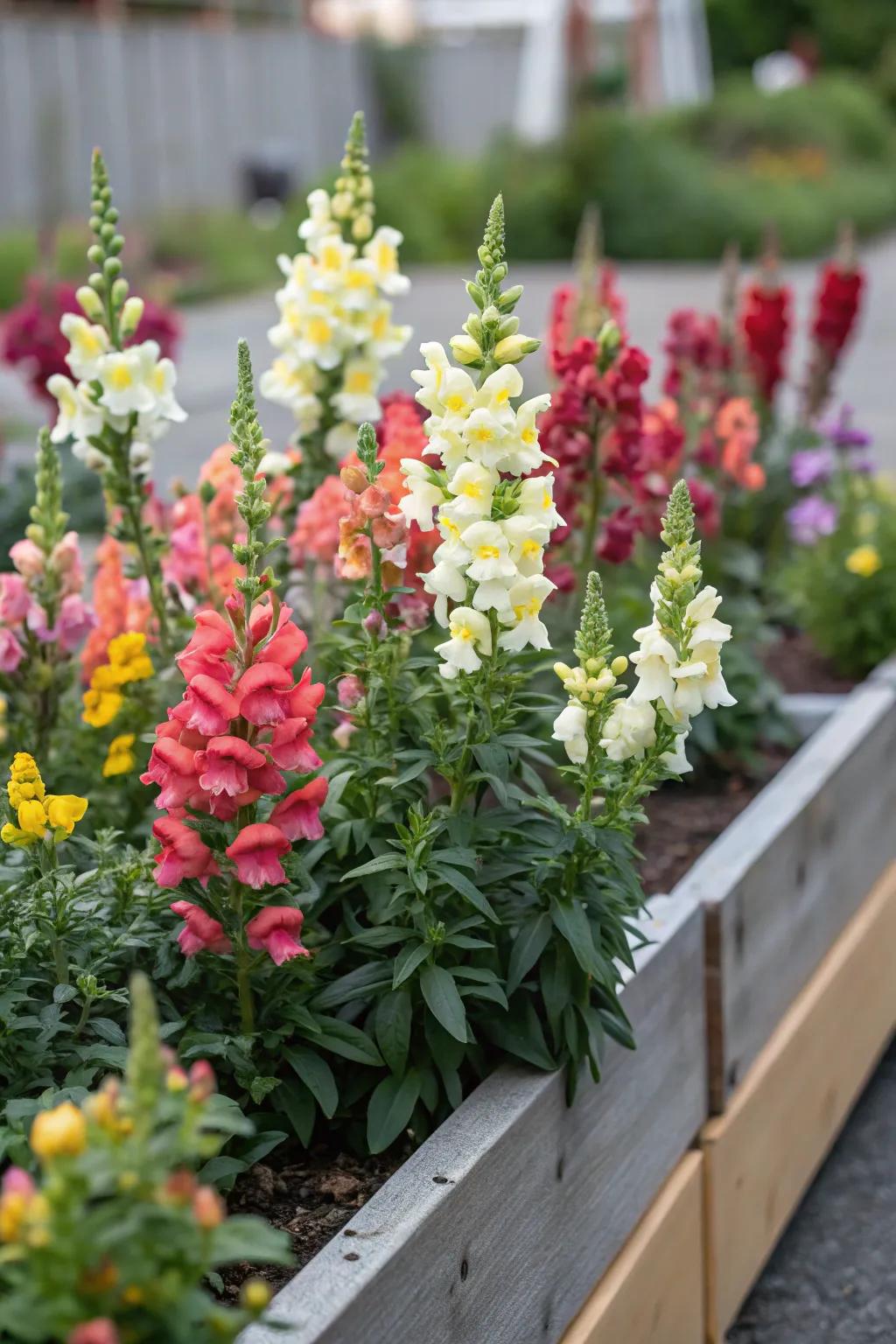
Snapdragons are a childhood favorite of mine. Their rich colors and quirky blooms bring a playful energy to any raised bed.
Some ideas to consider:
- Snapdragon Flower Seeds: Plant vibrant snapdragon seeds for a stunning display in your raised beds, elevating garden aesthetics.
- Tiered Raised Garden Bed: Enhance your garden setup with a spacious raised bed, perfect for cultivating colorful snapdragons.
- Organic Potting Soil Mix: Nurture your snapdragons with rich, organic soil, ensuring vibrant blooms and sustainable growth.
10. Begonia Bliss
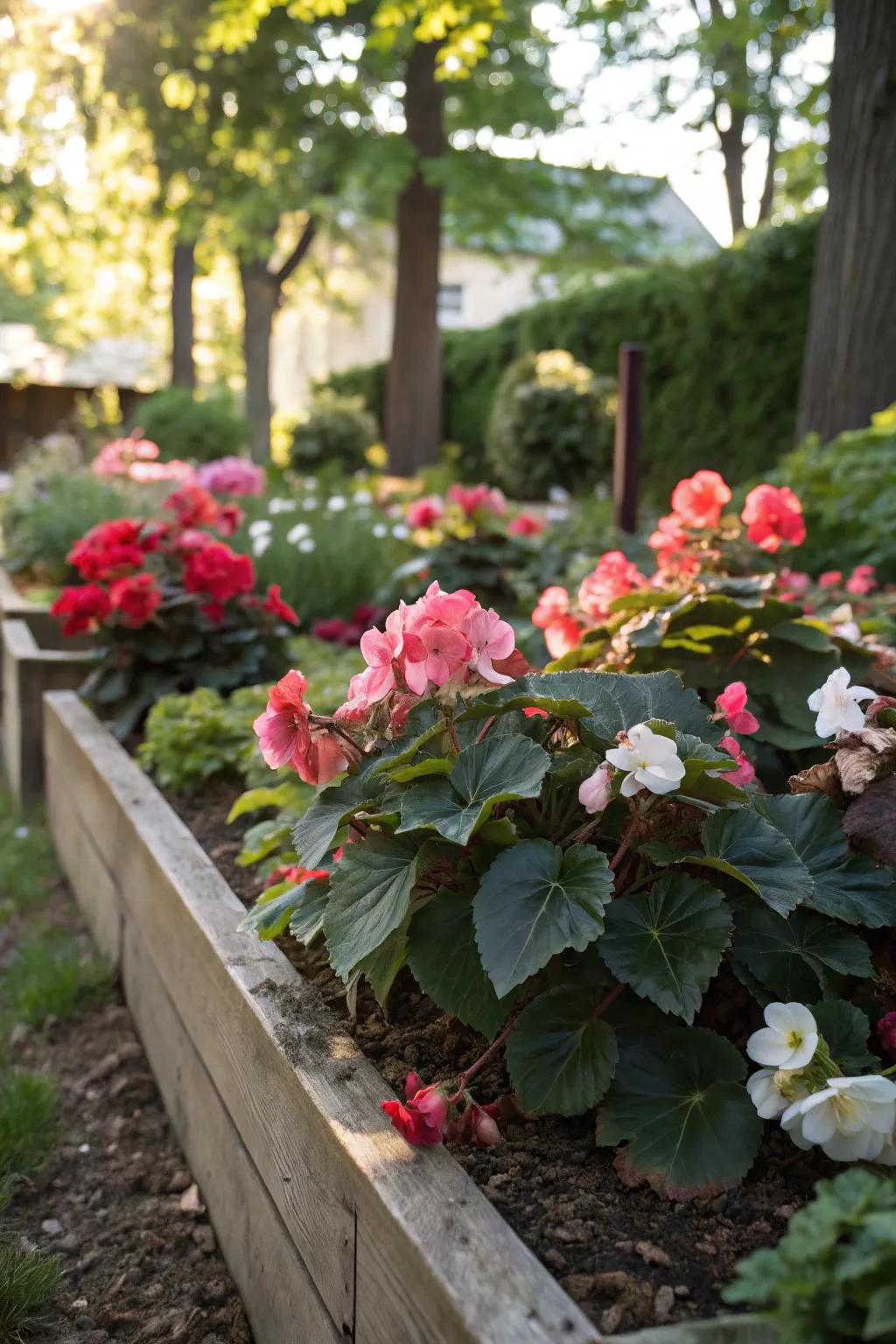
Begonias are a colorful choice for shaded raised beds. Their lush, waxy leaves and bright blooms make them a stunning addition.
Products that could assist:
- Professional Potting Soil for Begonias: Enhance your begonias’ growth with nutrient-rich potting soil. Perfect for shaded raised beds.
- Automatic Drip Irrigation Kit: Keep your begonia bed hydrated effortlessly with this easy-to-install drip irrigation system.
- Organic Fertilizer for Flowering Plants: Boost your begonias’ blooms with this effective, natural fertilizer designed for flowering plants.
11. Sunflower Spectacle
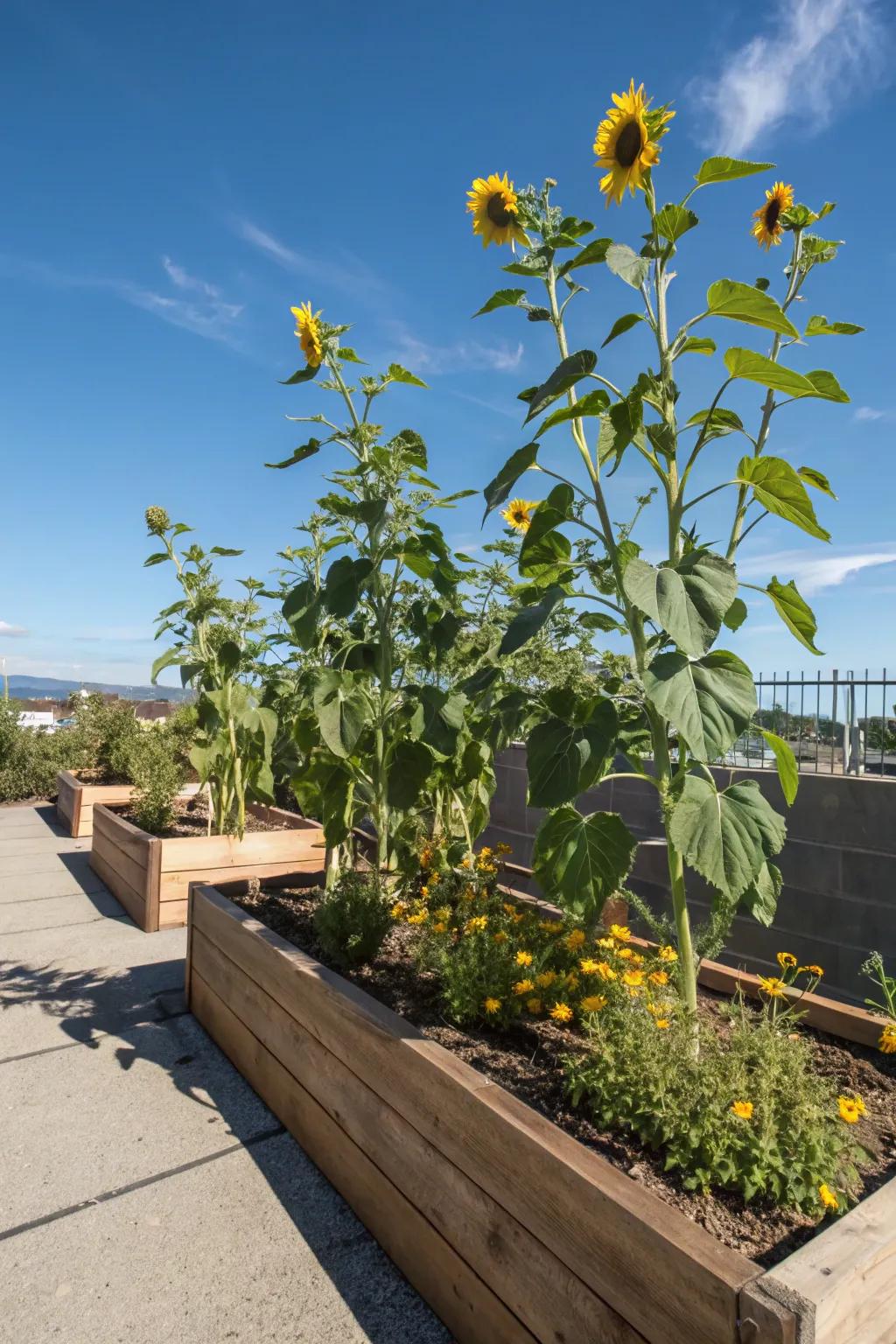
For a wow-factor, plant sunflowers in your raised beds. They add height, attract pollinators, and their sunny faces are always a joy to behold.
You might give these a try:
- Sunflower Seeds: Plant these vibrant sunflower seeds to enhance your garden’s beauty and attract pollinators effortlessly.
- Garden Planter Soil: Use premium garden soil to boost sunflower growth with rich nutrients and excellent drainage.
- Tall Plant Support Stakes: Support your sunflowers with durable stakes to ensure they stand tall against the wind.
12. Aster Appeal
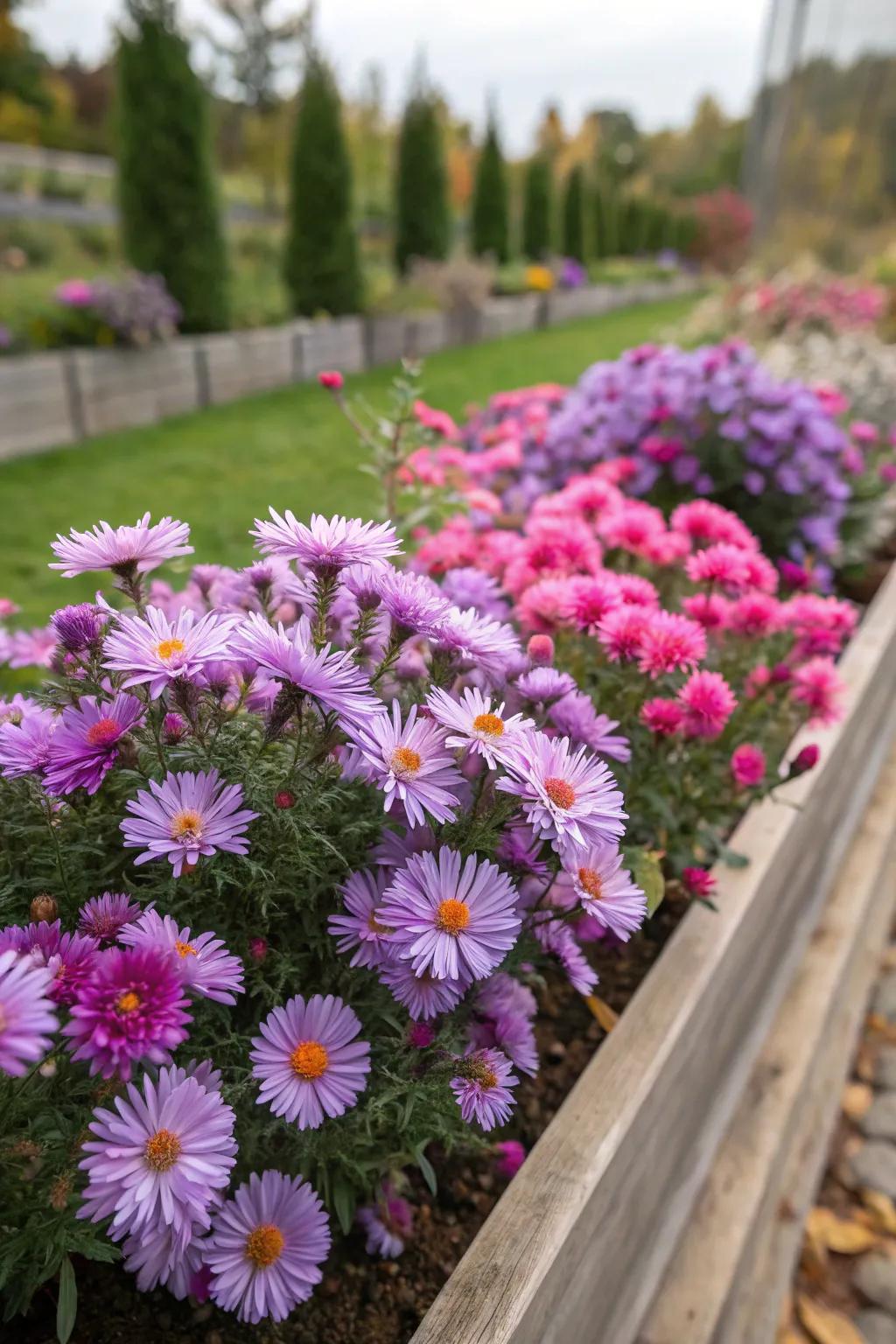
Asters are late bloomers that provide a last hurrah of color in the fall. Their star-shaped flowers are a must-have in my raised beds.
A few choices to try:
- Raised Garden Bed Kit: Elevate your garden with this easy-to-assemble raised bed kit, perfect for vibrant asters.
- Organic Aster Flower Seeds: Plant vibrant aster seeds for a stunning fall display in your raised garden bed.
- Premium Potting Soil Mix: Boost your asters’ growth with nutrient-rich potting soil ideal for raised garden beds.
13. Larkspur Luxury
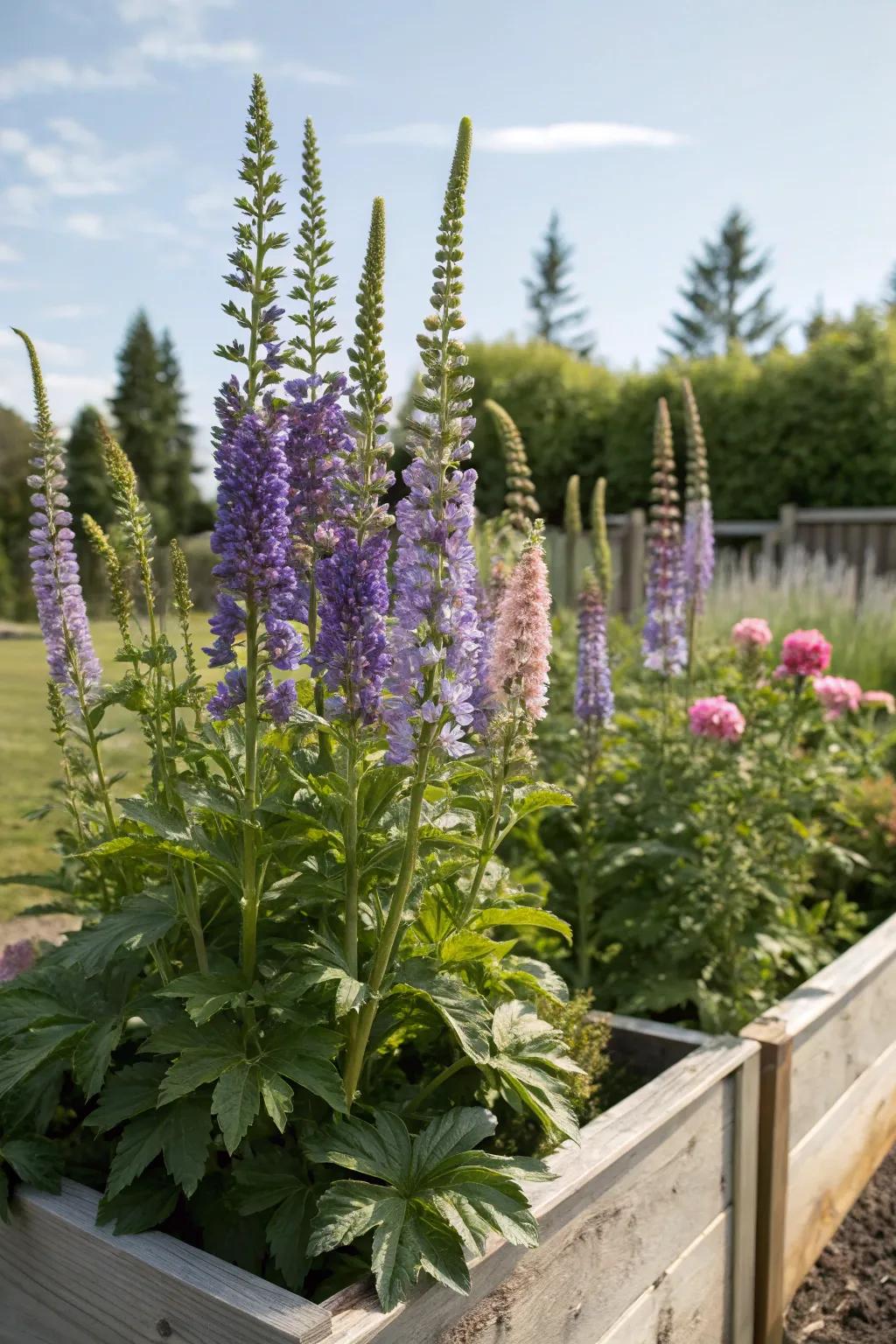
Larkspur offers a touch of elegance with its tall, graceful spikes. Their cool tones are perfect for adding depth to raised beds.
May just do the trick:
- Larkspur Flower Seeds: Enhance your raised bed with elegant larkspur seeds for a touch of beauty and depth.
- Raised Garden Bed Kit: Elevate your gardening with a durable raised bed kit; ideal for showcasing larkspur flowers.
- Organic Plant Fertilizer: Boost your larkspur blooms with natural fertilizer; perfect for vibrant and healthy flowers.
14. Poppy Passion
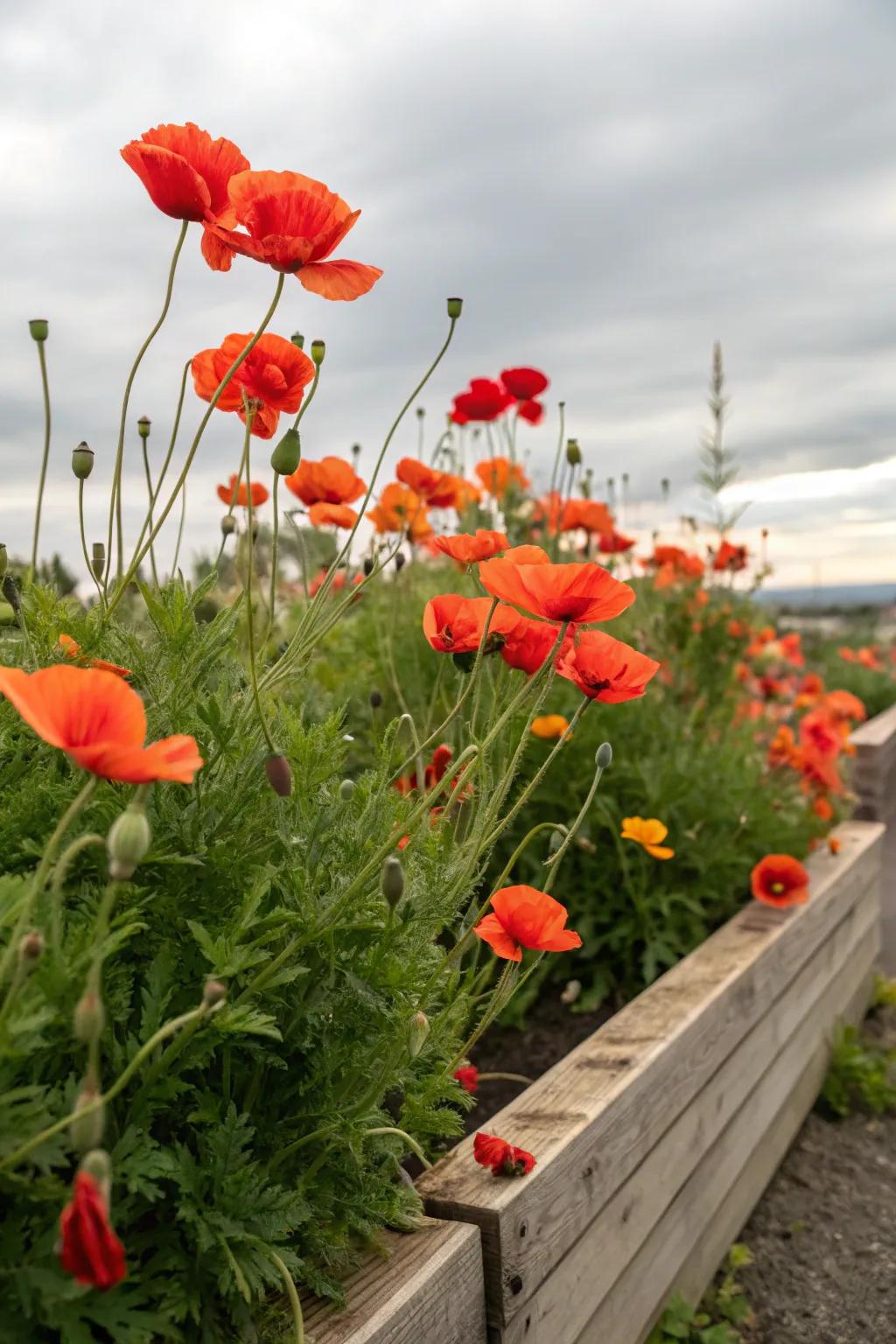
Poppies are the artists of the flower world, with their delicate petals and bold colors. They add an artistic touch to any raised bed.
Some handy options:
- Poppy Flower Seeds: Plant vibrant poppy seeds in your raised bed for an eye-catching splash of color.
- Raised Garden Bed Kit: Create an ideal environment for your poppies with an easy-to-assemble raised garden bed kit.
- Organic Plant Fertilizer: Boost your poppies’ growth with nutrient-rich organic fertilizer designed for flowering plants.
15. Cosmos Charm
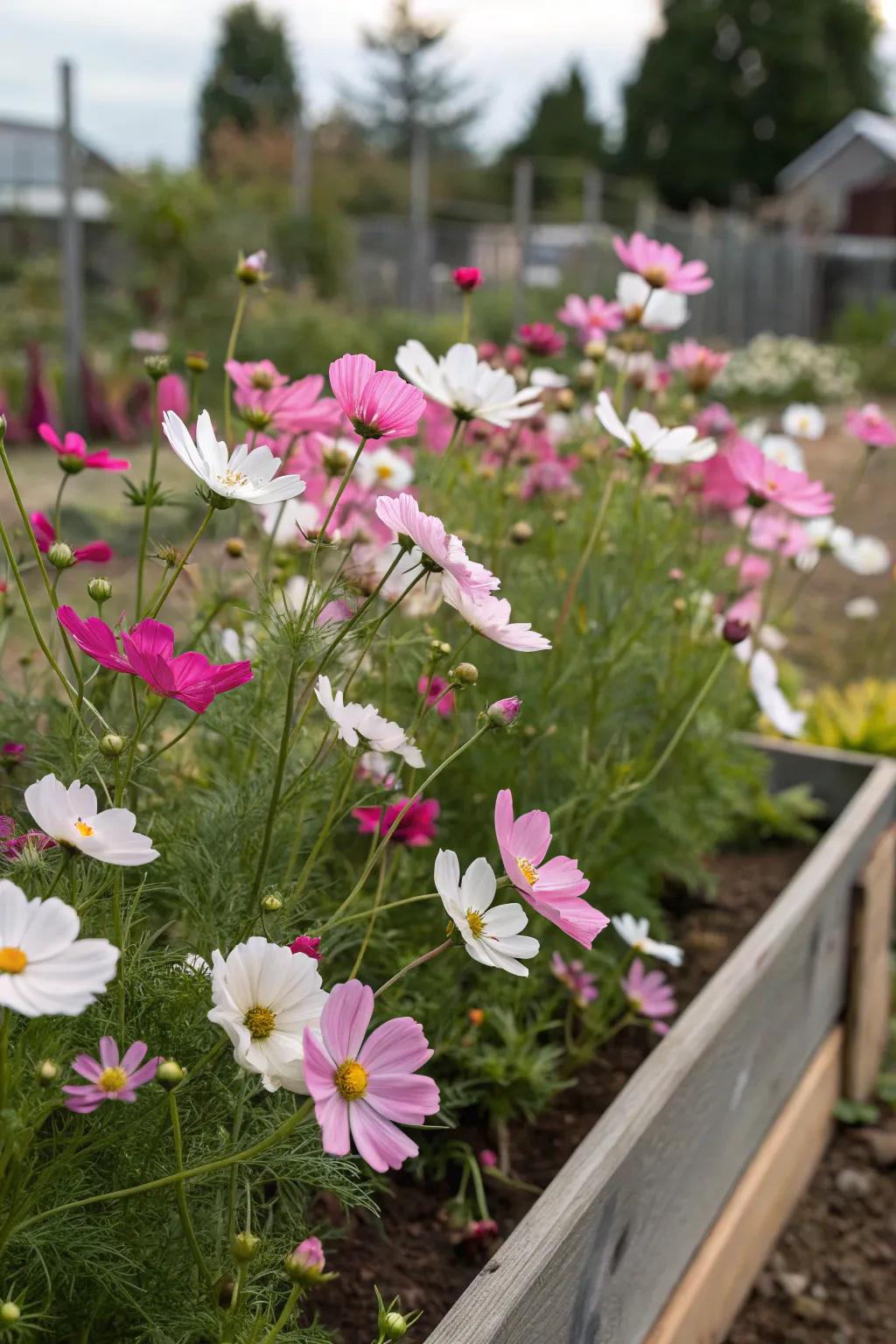
For a romantic touch, plant cosmos. Their delicate, ferny foliage and dainty flowers sway beautifully in the breeze.
These products might help:
- Cosmos Flower Seeds: Plant cosmos with ease, adding a romantic flair to your garden with these vibrant seeds.
- Raised Garden Bed Kits: Create a perfect space for your cosmos with easy-to-assemble raised garden bed kits.
- Gardening Soil Mix: Ensure healthy growth for your cosmos by using a nutrient-rich soil mix for raised beds.
16. Dahlia Delight
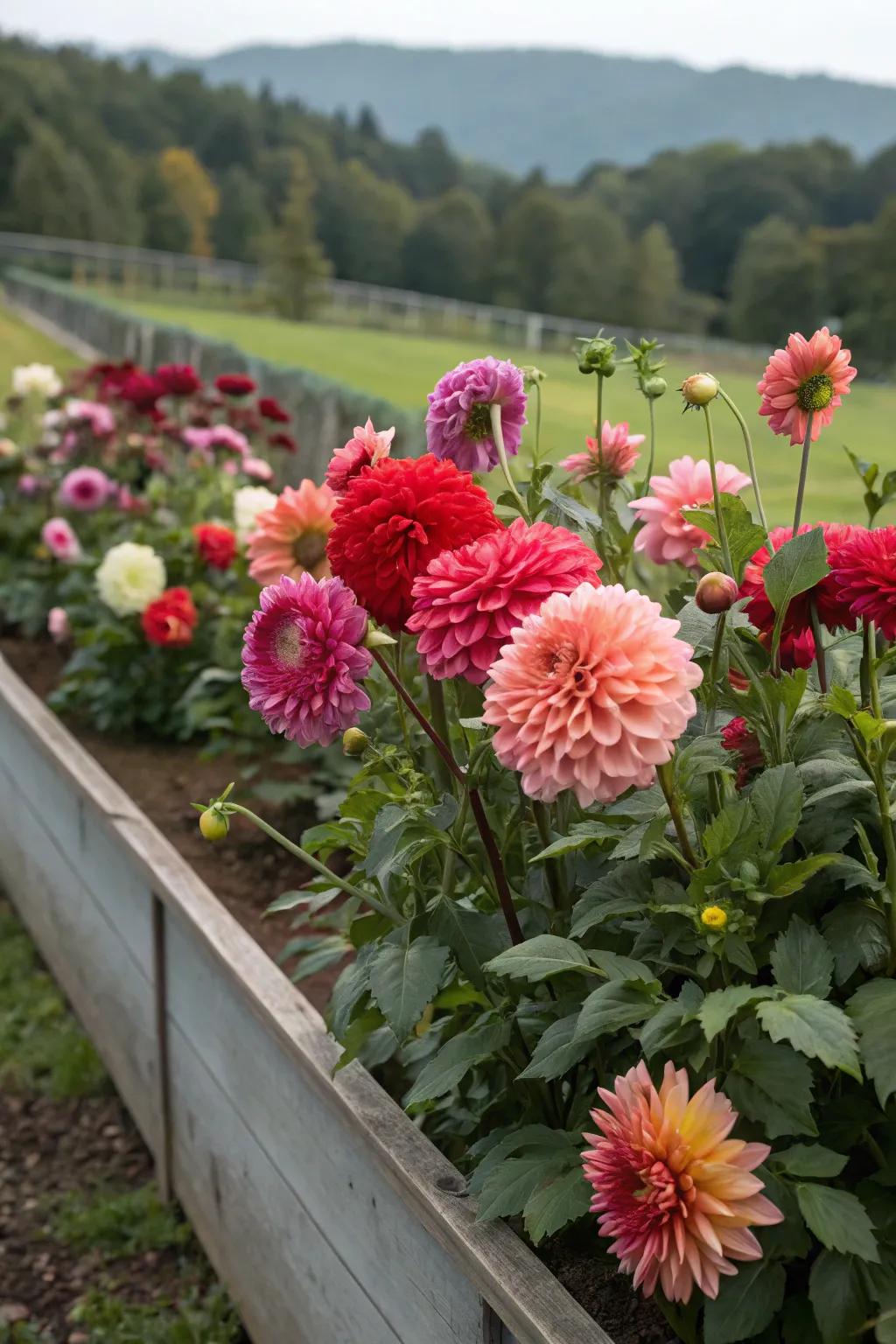
Dahlias are the divas of the garden, with their dramatic blooms and endless color options. They thrive in raised beds and bring a touch of elegance.
Useful items to consider:
- Raised Garden Bed Kit: Elevate your dahlias to perfection with an easy-to-assemble raised garden bed kit.
- Organic Dahlia Bulbs: Enhance your garden’s elegance with vibrant, organic dahlia bulbs for stunning blooms.
- Drip Irrigation System: Keep your dahlias hydrated effortlessly with a user-friendly drip irrigation system.
17. Globe Amaranth Glow
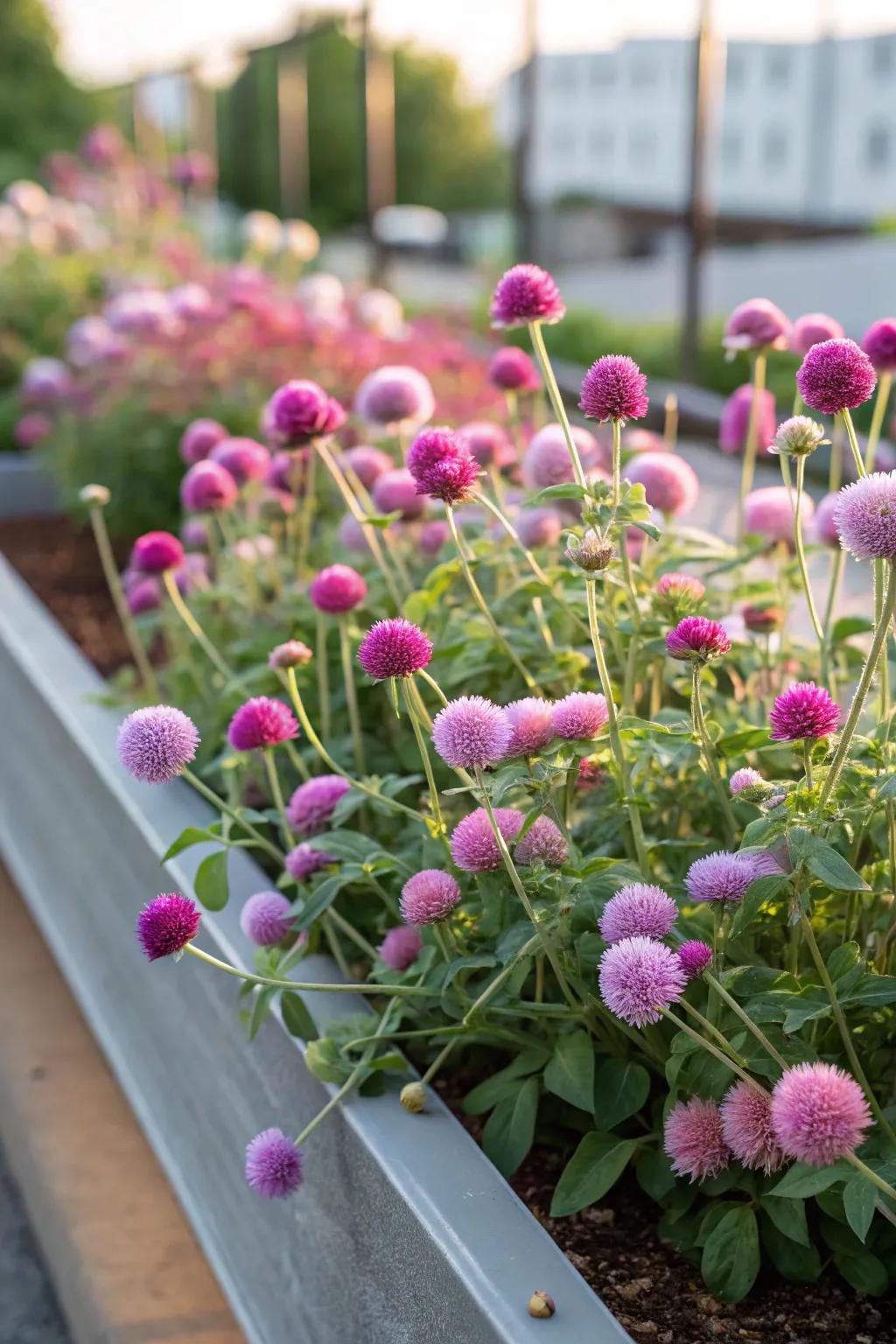
Globe amaranth’s pom-pom blooms never fail to make me smile. They’re hardy, long-lasting, and add whimsical charm to raised beds.
Possibly helpful picks:
- Raised Bed Planters: Elevate your garden’s charm with sturdy raised bed planters, perfect for vibrant globe amaranth.
- Organic Potting Soil Mix: Enhance growth with nutrient-rich organic potting soil mix, ideal for supporting hardy blooms.
- Garden Hand Tool Set: Maintain your raised beds with ease using a versatile garden hand tool set for all tasks.
18. Petal-Packed Petunias
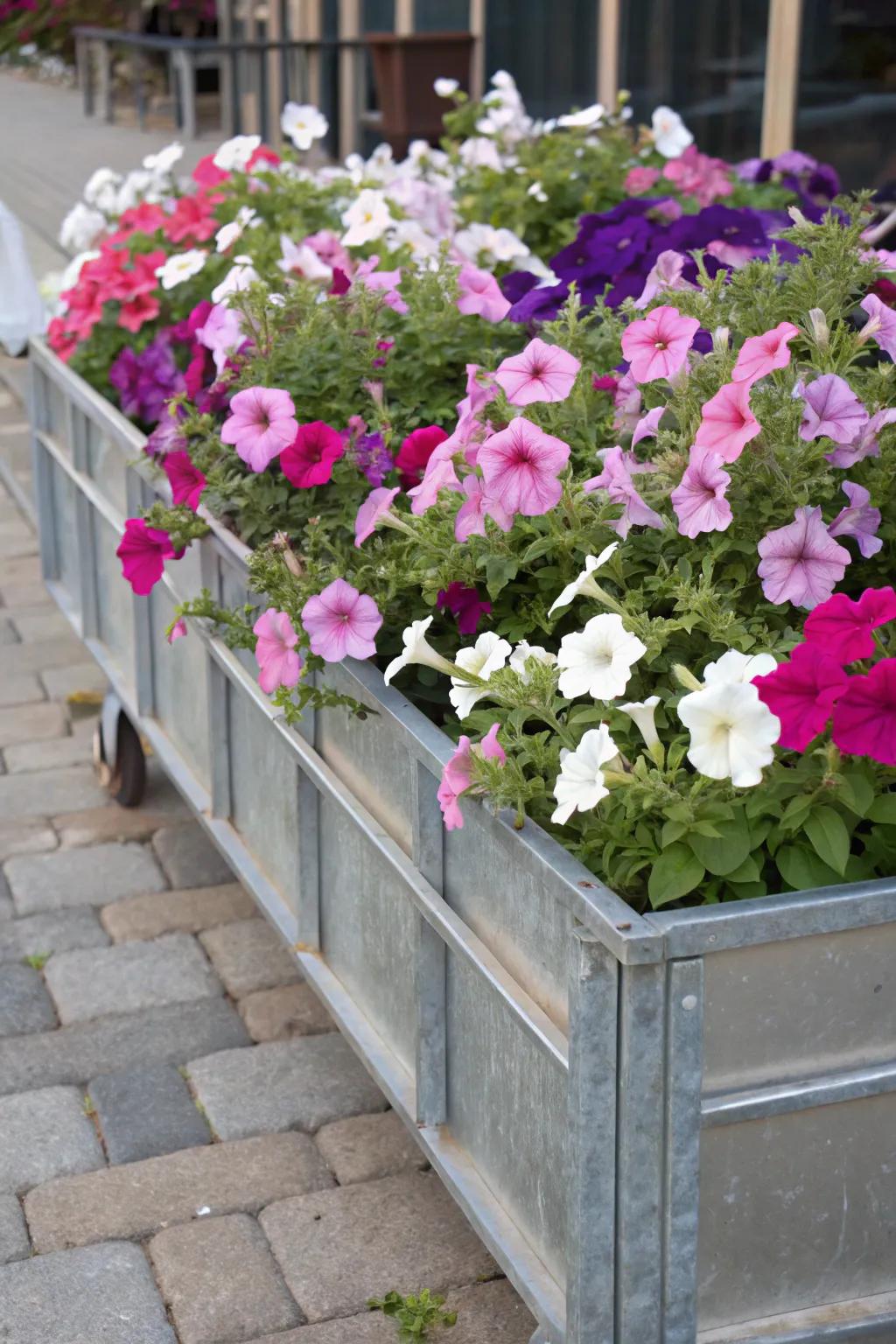
I adore petunias for their versatility and lush, ruffled blooms. They thrive in raised beds, especially when you give them plenty of sunshine and a little TLC.
Maybe worth checking out:
- Raised Garden Bed Kit: Elevate your petunias with a sturdy raised garden bed for optimal growth and vibrant blooms.
- Organic Potting Soil: Enhance petunia health and color with rich organic potting soil tailored for raised beds.
- Petunia Flower Seeds: Start your flower garden with quality petunia seeds for lush, colorful blooms in raised beds.
